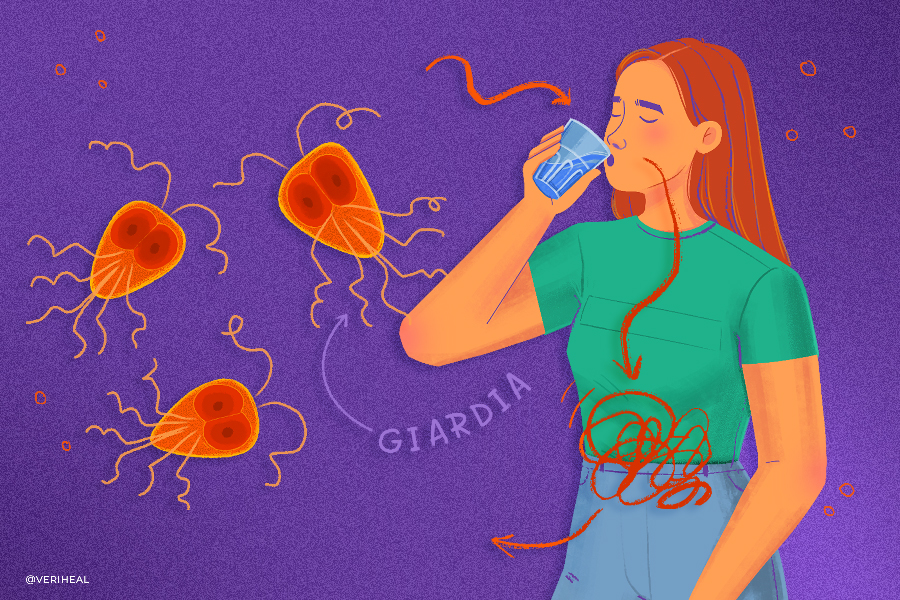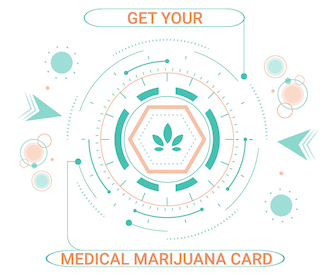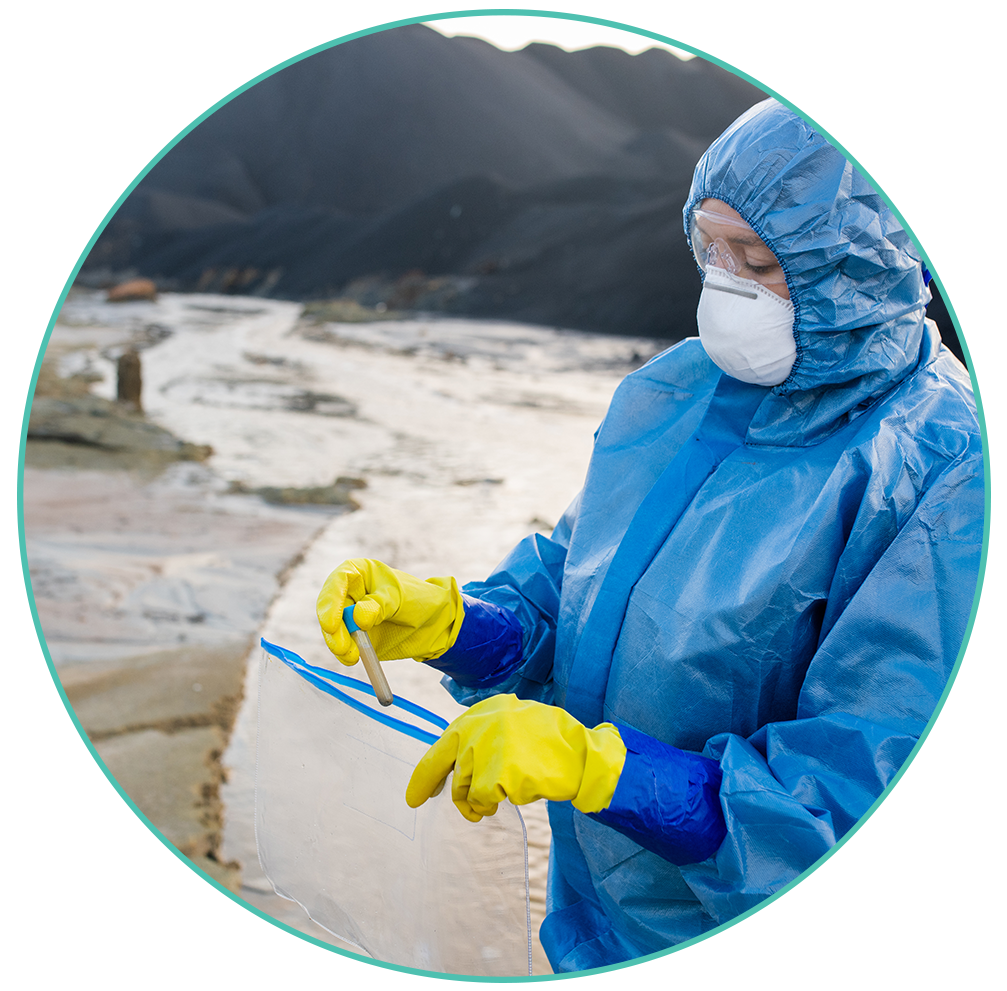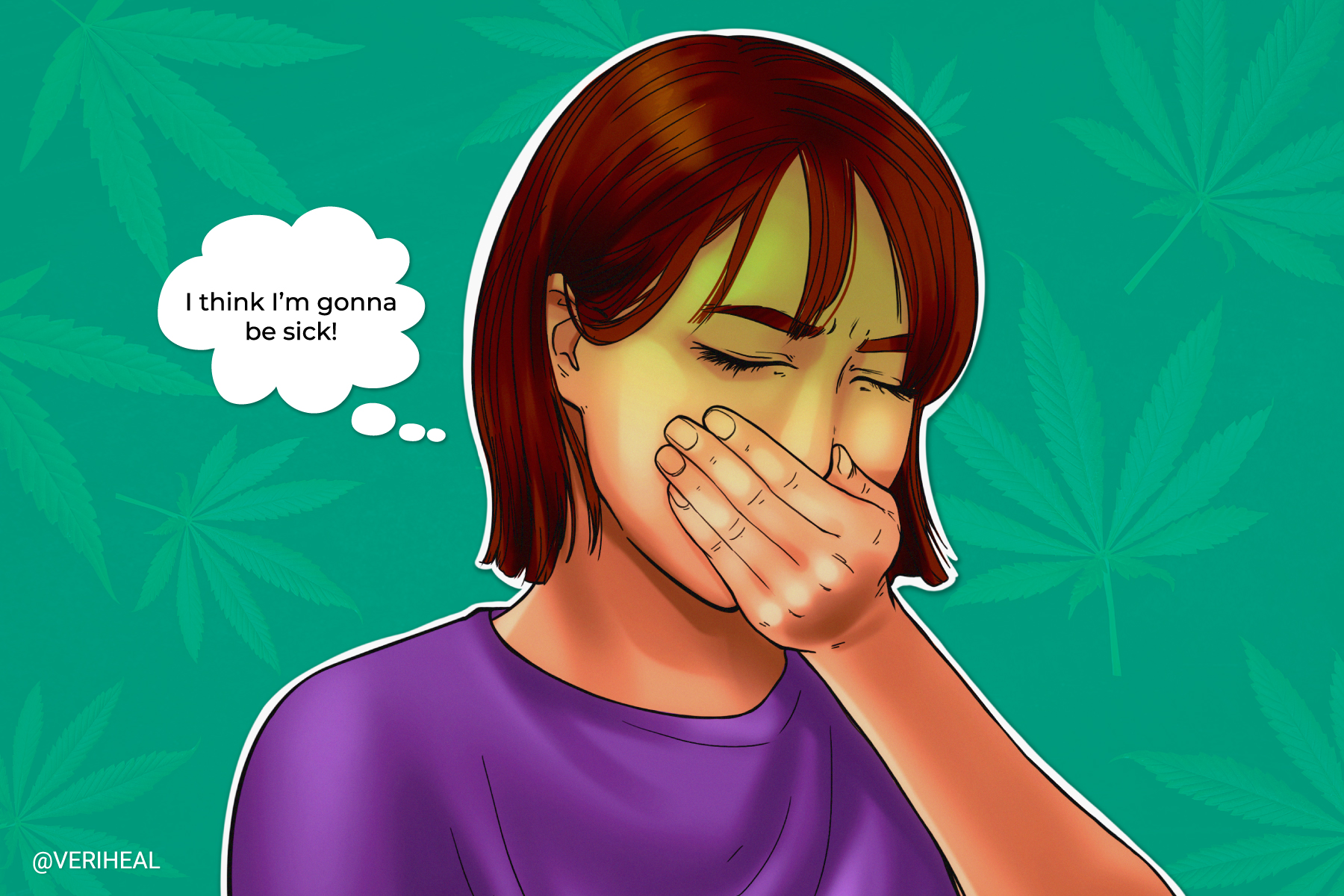Giardia Infection and Medical Cannabis
- What are the Signs, Symptoms and Types of Giardiasis
- Are Cannabinoids a Good Treatment Option for Giardiasis
- How Does the Endocannabinoid System (ECS) Play a Role in Treating Giardiasis
- What Cannabis Preparations are Suitable for Giardiasis
- Talking to Your Doctor About Giardiasis Treatments and Medical Cannabis
Giardia duodenalis, or Giardia intestinalis and Giardia lamblia, is a parasitic microorganism of the genus Giardia that settles in the small intestine. As a result of this parasitic intestinal invasion, a diarrheal condition called “giardiasis” occurs.
Giardia cases tend to arise in every region of the United States and elsewhere across the globe. In the U.S. alone, Giardia infection is considered the most prevalent intestinal parasitic disease, with the diarrheal condition affecting over one million people annually (5).
Globally, an estimated 200 million people suffer from the symptoms of Giardia, with as many as 500,000 new cases being reported annually (17). Children face an increased risk for Giardia infection than adults, with children typically having an elevated infection rate. Statistics indicate that the medical condition impacts the lives of almost 2% of adults and 8% of children in developed countries, with a disproportionate 31% infection rate in developing countries (8).
Evidence suggests that Giardia infection rates usually inflate during the summer months across the U.S. However, the people most at risk are those who travel to destinations with poor sanitation, such as India, Cambodia, and China. Untreated giardiasis may produce symptoms for six weeks or more.
Just like with any other type of illness, complications can surface in cases of giardiasis, with loss of water and other essential bodily fluids (dehydration) being one severe and common complication (16).
The good news is that giardiasis can be treated. One particular type of plant medicine rapidly gaining attention as a potential tool for digestive disorders and intestinal infections like giardiasis is cannabis.
Although most research spotlights cannabis for irritable bowel disease (IBD), science supports using this natural remedy for the unpleasant symptoms of other digestive tract disorders, such as giardiasis.
What are the Signs, Symptoms and Types of Giardiasis?
Currently, doctors recognize 5-6 morphologically distinct species of giardiasis. However, cyst and trophozoite forms are the most common in diagnosed patients. Giardia cysts are responsible for diarrheal disease transmission and can contaminate food, water, and surfaces.
If swallowed during this infective stage of their life cycle, Giardia cysts may cause giardiasis (6).On the other hand, the trophozoite form is the motile form detected in the intestinal tract (9). Many people will be infected with Giardia parasites without showing any symptoms.
Should you experience any symptoms of giardiasis, they will likely typically transpire 1-2 weeks post-exposure. According to Healthline, some of the most common symptoms of giardiasis include:
- Abdominal cramps, bloating, and pain
- Appetite loss
- Diarrhea or greasy stools
- Excessive gas
- Fatigue
- Headaches
- Nausea
- Unexplained weight loss
- Vomiting (7)
Giardiasis: Causes and Complications
G. lamblia parasites cause giardiasis. These transmissible parasites occur naturally in animal and human feces. They also thrive in contaminated food, soil, and water and can cling to life outside a host for extended periods. Accidental consumption can spur an infection.
Since the Giardia parasite can contaminate any surface it comes into contact with, it goes without saying that the diarrheal disease is easily spread. Although giardiasis can be contracted from food, it is less likely because heat destroys the parasites. On the other hand, the parasite can be transferred into the body by poorly handling water-contaminated food.
Giardiasis can also be spread by:
- Maintaining close contact with someone who has giardiasis, especially in settings where children are cared for
- Traveling in places that have poor sanitation
- Coming into contact with contaminated feces through sexual contact from someone with Giardia
- Transmitting Giardia parasites from contaminated surfaces into the mouth
- Being exposed to infected animals or animal environments that have been contaminated with feces.
After a person becomes infected by the Giardia parasite, symptoms of the illness gradually surface within 1-2 weeks. The risk factors for Giardia are notably high among hospitalized children (4).
Univariate analyses showed that the primary risk factors associated with Giardia infection in children were as follows:
- Residing in a rural residence
- Drinking or cooking with unboiled tap water
- Biting nails and skin on the hands
- Coming into contact with someone who has a parasitic infection
- Having a family history of previous parasitic infection
- Eating raw and unwashed vegetables
- Living in a household without a clean aqueduct water supply
Based on information published in the World Journal of Gastroenterology (WJG), the long-term and extraintestinal outcome of Giardia duodenalis infections range from bacterial and viral problems to metabolic issues (e.g., unexplained weight loss/malnutrition), nutritional deficiencies, muscular complications, and severe gastrointestinal issues, such as post-infectious irritable bowel syndrome (10).
An Annals of Tropical Pediatrics research report indicated that diarrhea caused by giardiasis was associated with poor cognitive function due to zinc and iron micronutrient deficiencies and defects in the antioxidant system, all of which may impact neuroplasticity. A separate paper indicated that Giardia trophozoites are present in the pancreatic tissue and gallbladder’s tumoral mass, although the relationship is unclear (2).
Are Cannabinoids a Good Treatment Option for Giardiasis?
Giardiasis is the most common among the different types of waterborne parasitic infections of the human intestine. With that being said, there is a pressing need for treatment, and with so many unpleasant symptoms, patients are often left seeking complementary therapies. One example is cannabis, which contains an abundance of naturally-occurring compounds called cannabinoids.
Cannabis plant extracts have a long history of being adopted in healthcare practices to ease the symptoms of chronic gastrointestinal conditions, such as diarrhea, irritable bowel syndrome, and inflammatory bowel disease. Plus, randomized clinical trials have shown that cannabinoids may reduce gastrointestinal motility. Researchers have confirmed that modulation of the gut endogenous cannabinoid system may provide a valid therapeutic target for gastrointestinal motility disorders, such as giardiasis (3).
Some years ago, scientists learned that cannabinoids inside the gut thwarted peristalsis (coordinated contraction of involuntary circular muscles) and minimized the severity of diarrhea. A report outlined in this issue of the British Journal of Pharmacology drew attention to the connection between the presence of CB2 receptors in the rat intestine and reduced increase of intestinal motility induced by endotoxin inflammation (11).
In a study published in the December 2013 issue of the journal Inflammatory Bowel Diseases, medical marijuana was “very helpful” in reducing abdominal pain, diarrhea, and nausea in existing and previous cannabis consumers (15). A total of 292 patients with IBD were surveyed at a medical facility in Boston, 12% of whom were active marijuana users, and 39% were former users.
Similar research recognizes a growing fraction of IBD patients who use cannabis for reportedly successfully managing abdominal pain, joint pain, cramping, diarrhea, poor appetite, weight loss, and nausea (1).
The U.S. Food and Drug Administration (FDA) has permitted specific cannabinoid products for chemotherapy-induced nausea and vomiting in cancer patients and increased appetite in underweight patients with AIDS.
How Does the Endocannabinoid System (ECS) Play a Role in Treating Giardiasis?
The endocannabinoid system (ECS) is an active and highly complex cell signaling network. It is composed of a variation of cannabinoid receptors, endocannabinoids (body-produced cannabinoids), and enzymes that help maintain several unique functions in the human body.
The ECS was discovered during the early 1990s by Czech analytical chemist Lumír Hanuš, who went down in history for isolating the first endocannabinoid in the human brain. Fast-forward to today, researchers have been delving deeper into this system and its important role in bodily functions (14).
Cannabis mediates its effects via at least two cannabinoid receptors — CB1 and CB2. CB1 receptors are located mainly on central and peripheral neurons and the enteric nervous system, where they fine-tune the process of neurotransmitter release. Conversely, CB2 receptors are associated with feelings of pain, inflammation, and immune function.
What Cannabis Preparations Are Suitable for Giardiasis?
One of the main appeals associated with medical cannabis use to treat giardiasis is the diversity in product options. Persons who are nauseous may opt for inhaled methods. Various cannabis preparations are available:
- Edibles
- Pills, capsules, and tablets
- Powder Cannabis powder
- Transdermal Patches
- Vapes
- Tinctures
Talking to Your Doctor About Giardiasis Treatments and Medical Cannabis
Children and adults contracting Giardia infection without displaying symptoms usually don’t require treatment unless they risk transferring the parasites. In most cases, patients diagnosed with giardiasis will experience a full recovery within a few weeks. On the other hand, treatment is necessary if the signs and symptoms are extreme and take a toll on health.
Doctors who recommend medication for Giardia infection may prescribe the following types of pharmaceutical-grade drugs:
- Metronidazole (Often prescribed for 3-7 days)
- Tinidazole (The first-line choice for patients above the age of three. To be taken over a 3-5 day period.)
- Nitazoxanide (A top choice for patients above the age of three. To be taken over three days.)
Before obtaining medicine for Giardia infection, you must visit a doctor for a proper diagnosis. To accurately diagnose giardiasis, your doctor will likely take a test of a sample of your stool to determine whether or not parasites are present.
For the utmost accuracy, numerous stool samples may be required over a few days. Laboratory examinations will ensue, and when you receive treatment for giardiasis, you may also be required to undergo more stool tests to assess the efficacy of treatment (13).
In unique or unclear cases, your doctor may also conduct an endoscopy — a procedure that involves administering a flexible tube down the throat and into the small intestine. This procedure gives your doctor a clear view of the digestive tract and enables them to take an accurate tissue sample (7).
Once a diagnosis has been made, you can arrange an appointment with your nearest medical marijuana doctor. During the appointment, you may be able to get a written recommendation to use the plant. This depends on your health history and the state’s qualifying conditions since giardiasis alone may not be a qualifying condition. However, it’s important to note that cannabis should not be used as a substitute for other types of doctor-prescribed medications.
Complementary Treatments Worth Discussing with Your Doctor
The human body is a spectacular vessel capable of self-healing. While you must continue taking any medications or practicing any treatment plans recommended by your doctor, complementary therapies could offer a route of symptomatic relief and immune system enhancement for giardiasis.
Zinc supplementation is a popular choice of complementary medicine that is generally welcomed in cases of giardiasis. One PLoS One report revealed that zinc supplementation reduced the rate of giardiasis-related diarrhea (18). However, it was also found that multi-nutrient supplementation almost doubled the diarrhea rates among children, so expert advising is recommended.
Remember that although medical marijuana and other complementary medicines can prove effective for you or a loved one who may be suffering from the symptoms of giardiasis, it’s essential that you continue following any treatment plan prescribed by your doctor.
1. Ahmed, W., & Katz, S. (2016). Therapeutic Use of Cannabis in Inflammatory Bowel Disease. Gastroenterology & hepatology, 12(11), 668–679. https://www.ncbi.nlm.nih.gov/pmc/articles/PMC5193087/
2. Ajjampur, S. S., Koshy, B., Venkataramani, M., Sarkar, R., Joseph, A. A., Jacob, K. S., Ward, H., & Kang, G. (2011). Effect of cryptosporidial and giardial diarrhoea on social maturity, intelligence and physical growth in children in a semi-urban slum in South India. Annals of Tropical Paediatrics, 31(3), 205–212. https://pubmed.ncbi.nlm.nih.gov/21781414/
3. Aviello, G., Romano, B., & Izzo, A. A. (2008). Cannabinoids and gastrointestinal motility: animal and human studies. European review for medical and pharmacological sciences, 12 Suppl 1, 81–93. https://pubmed.ncbi.nlm.nih.gov/18924447/
4. Bello, J., Núñez, F. A., González, O. M., Fernández, R., Almirall, P., & Escobedo, A. A. (2011). Risk factors for giardia infection among hospitalized children in Cuba. Annals of Tropical Medicine & Parasitology, 105(1), 57–64. https://www.ncbi.nlm.nih.gov/pmc/articles/PMC4089789/
5. CDC. (2021, February 26). Parasites — Giardia. Centers for Disease Control and Prevention. Retrieved October 26, 2022, from https://www.cdc.gov/parasites/giardia/infection-sources.html
6. Centers for Disease Control and Prevention. (2021, February 26). Pathogen and environment. Centers for Disease Control and Prevention. Retrieved October 26, 2022, from https://www.cdc.gov/parasites/giardia/pathogen.html
7. Delgado, A. (2018, September 17). Giardiasis: Causes, symptoms, and treatment. Healthline. Retrieved October 26, 2022, from https://www.healthline.com/health/giardiasis
8. Dunn N, Juergens AL. Giardiasis. [Updated 2022 May 8]. In: StatPearls [Internet]. Treasure Island (FL): StatPearls Publishing; 2022 Jan-. Available from: https://www.ncbi.nlm.nih.gov/books/NBK513239/
9. Giardia. Giardia – an overview | ScienceDirect Topics. (n.d.). Retrieved October 26, 2022, from https://www.sciencedirect.com/topics/biochemistry-genetics-and-molecular-biology/giardia
10. Halliez, M. C. M. (2013). Extra-intestinal and long term consequences of giardia duodenalis infections. World Journal of Gastroenterology, 19(47), 8974. https://www.ncbi.nlm.nih.gov/pmc/articles/PMC3870550/
11. Izzo A. A. (2004). Cannabinoids and intestinal motility: welcome to CB2 receptors. British journal of pharmacology, 142(8), 1201–1202. https://www.ncbi.nlm.nih.gov/pmc/articles/PMC1575197/
12. Kurita, A., Maguchi, H., Takahashi, K., Katanuma, A., Osanai, M., Kin, T., Yane, K., Hashigo, S., & Ohtsubo, M. (2010). Small pancreatic cancer with giardiasis. Pancreas, 39(6), 943–945. https://pubmed.ncbi.nlm.nih.gov/20664486/
13. Mayo Foundation for Medical Education and Research. (2021, July 16). Giardia infection (giardiasis). Mayo Clinic. Retrieved October 26, 2022, from https://www.mayoclinic.org/diseases-conditions/giardia-infection/diagnosis-treatment/drc-20372790
14. MediLexicon International. (2021). Endocannabinoids: What are they and what do they do? Medical News Today. Retrieved October 26, 2022, from https://www.medicalnewstoday.com/articles/endocannabinoid
15. Ravikoff Allegretti, J., Courtwright, A., Lucci, M., Korzenik, J. R., & Levine, J. (2013). Marijuana use patterns among patients with inflammatory bowel disease. Inflammatory Bowel Diseases, 19(13), 2809–2814. https://pubmed.ncbi.nlm.nih.gov/24185313/
16. Staff, F. E. (2022, August 18). Giardiasis. familydoctor.org. Retrieved October 26, 2022, from https://familydoctor.org/condition/giardiasis/
17. Sánchez, A., Munoz, M., Gómez, N., Tabares, J., Segura, L., Salazar, Á., Restrepo, C., Ruíz, M., Reyes, P., Qian, Y., Xiao, L., López, M. C., & Ramírez, J. D. (2017). Molecular epidemiology of Giardia, Blastocystis and cryptosporidium among indigenous children from the Colombian amazon basin. Frontiers in Microbiology, 8. https://www.frontiersin.org/articles/10.3389/fmicb.2017.00248/full#B10
18. Veenemans, J., Schouten, L. R., Ottenhof, M. J., Mank, T. G., Uges, D. R., Mbugi, E. V., Demir, A. Y., Kraaijenhagen, R. J., Savelkoul, H. F., & Verhoef, H. (2012). Effect of preventive supplementation with zinc and other micronutrients on non-malarial morbidity in Tanzanian pre-school children: A randomized trial. PLoS ONE, 7(8). https://pubmed.ncbi.nlm.nih.gov/22870238/


















